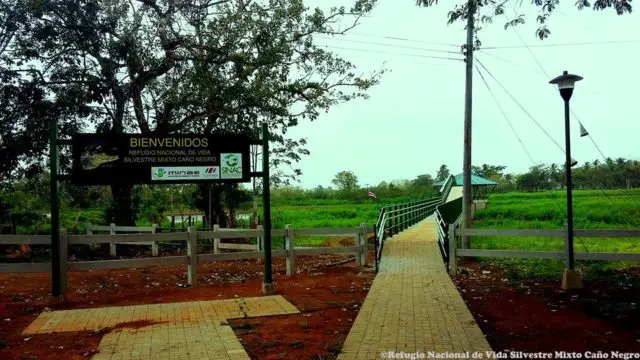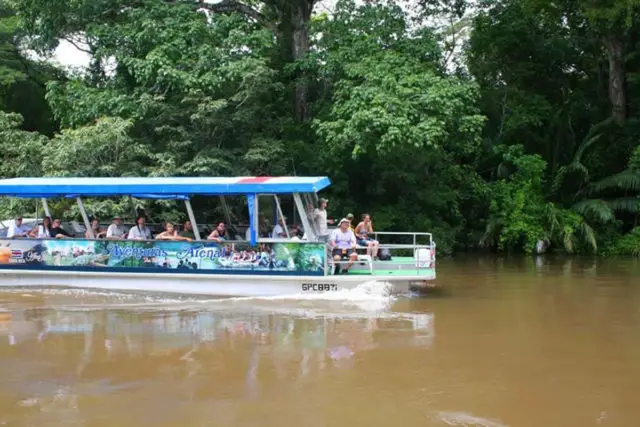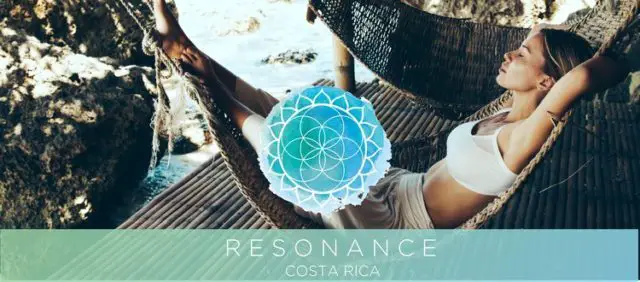Caño Negro is considered by many to be the third most important wetland in the world. An essential visit when in Costa Rica, this sanctuary was named “Wetland of International Importance in 1991” and is one of the most important wetlands in the country. The design of a world protected the area by conservation groups such as Ramsar; Caño Negro is home to the rarest species of plants, animals, and birds in the world.

Very close to the border with Nicaragua, the Caño Negro wildlife refuge is located in the province of Alajuela in the cantons of Los Chiles and Guataso. Thirty kilometers southeast of the city of Upala, this refuge is located in northern Costa Rica and is undoubtedly one of the most ecologically diverse sites in the country. A paradise for nature lovers, Caño Negro is the habitat of many migrant and endangered fish, as well as reptiles, birds, and plants.
As one of the unique zones of true exclusions of Costa Rica, this natural reserve is the lodging of the Atractosteus topicus (fish) as well as the Cayman crocodilus fuscus (caiman) and the grackle bird Nicaragua. A freshwater lagoon, Caño Negro has more than 800 hectares and is located between the monsoon climate of the Pacific, the lowlands and the humid climate of the Caribbean coastal area.
A region of extreme biological importance to the immense variety of flora and fauna found here, Caño Negro is also a key migratory route for birds from the north. To date, more than 200 species of birds have been found here, as well as several plants and animals as unique as they are different.
This wildlife refuge is also home to rare birds such as the Northern Jacana, the Ibis, the Storks, Jabirú, Anhingas, cormorants, and pink spatulas. In the waters of the Caño Negro lagoon, you can find rare fish such as robalo and guapote.
Among the first national shelters to give the balanced management of tourism activities with the biological resources of the area, Caño Negro grants a great educational experience for all, individuals and families alike. Access the road during the dry season, the wildlife reserve that has an error when it rains, so it is difficult to reach unless one uses a boat or a boat.
It is a set of lowlands, seasonal floods, formed by some lagoons, swamps, and yolillales that provide refuge to a diverse fauna especially birds. Life revolves around the Caño Negro lagoon, fed by the cold. With the arrival of the dry season in early February and until April, it is reduced to lagoons, grooves, and beach.
This refuge has won among the most nature-oriented and eco-tourism tourists. The reason is that the lake is filled at the beginning of the rainy season by joining the cold; this phenomenon provides an ideal habitat for the protection of birds, becoming a paradise for lovers of them.
Variety of birds

The variety of birds is exorbitant, in this park you can find garzillas, oxen, jabirú (endangered) pink spatulas, white ibis, needle ducks, piches and neotropical cormorants. The place is especially important because of the largest neotropical cormorant colony in the country nests here, and also because it is the only region with permanent populations of the Nicaraguan clarinero, an endemic bird in the Nicaragua lake basin.
In this area, there are also endangered animals that also enjoy the protection of the reserve such as. Pumas, dantas, the manigordo, as well as other more common species such as congós monkeys, carablanca and colorado, two-toed sloth tolomucos, otters, skunks and deer in the rivers, are abundant land turtles, alligators and about 30 species of fish of freshwater, including the Gaspar considered a living fossil.
Caño Negro is a paradise for nature lovers and especially for bird watching. Additional you can see walks, three types of monkeys and bats among others.
Tours by Caño Negro

During the tour of Caño Negro, you will be able to know all the details of the flora and fauna of the richest places in the biodiversity of the entire American continent. A bilingual and naturalist guide will be evacuating your curiosities and will be possible because this trip is the most enriching for everyone.
It is, without a doubt, the ideal space to know the native Costa Rican species, as well as their orography and peculiar geographical characteristics.


